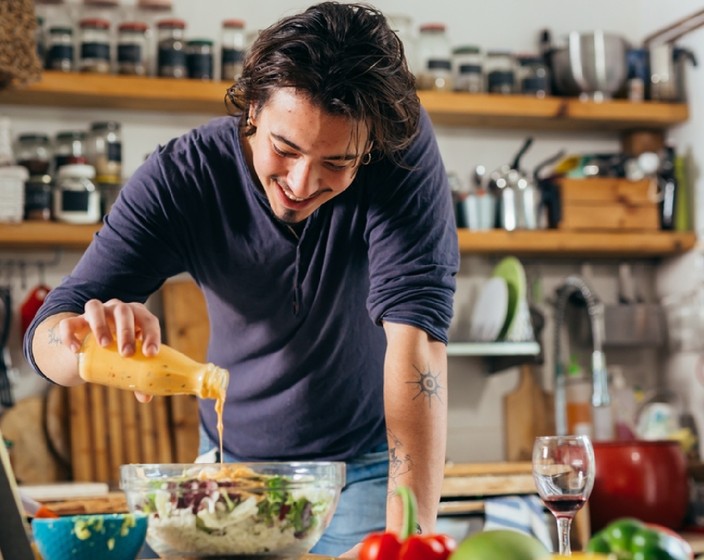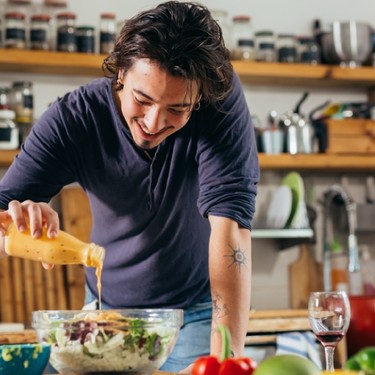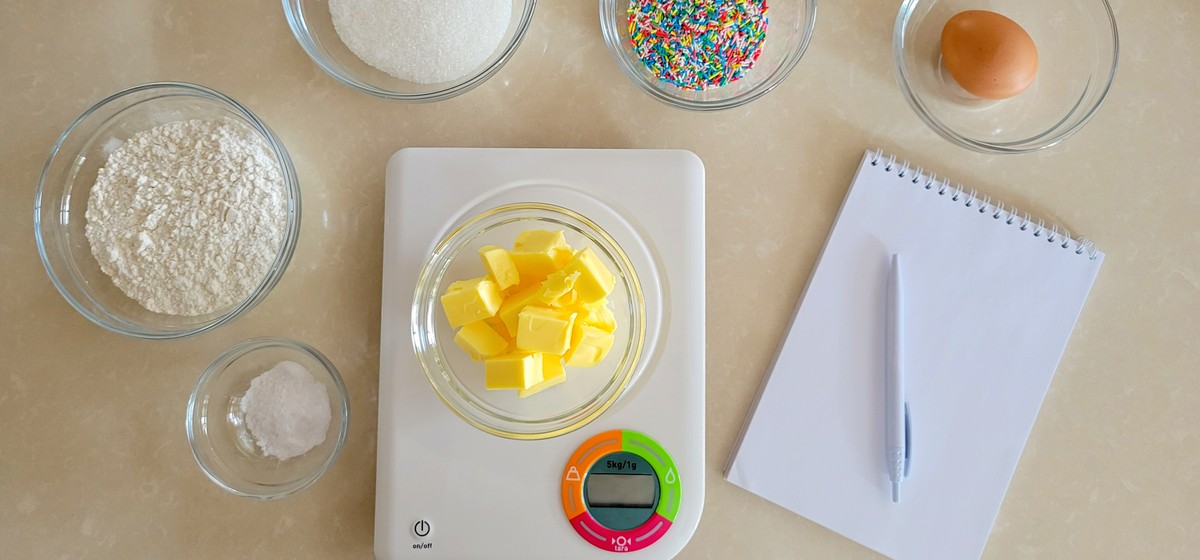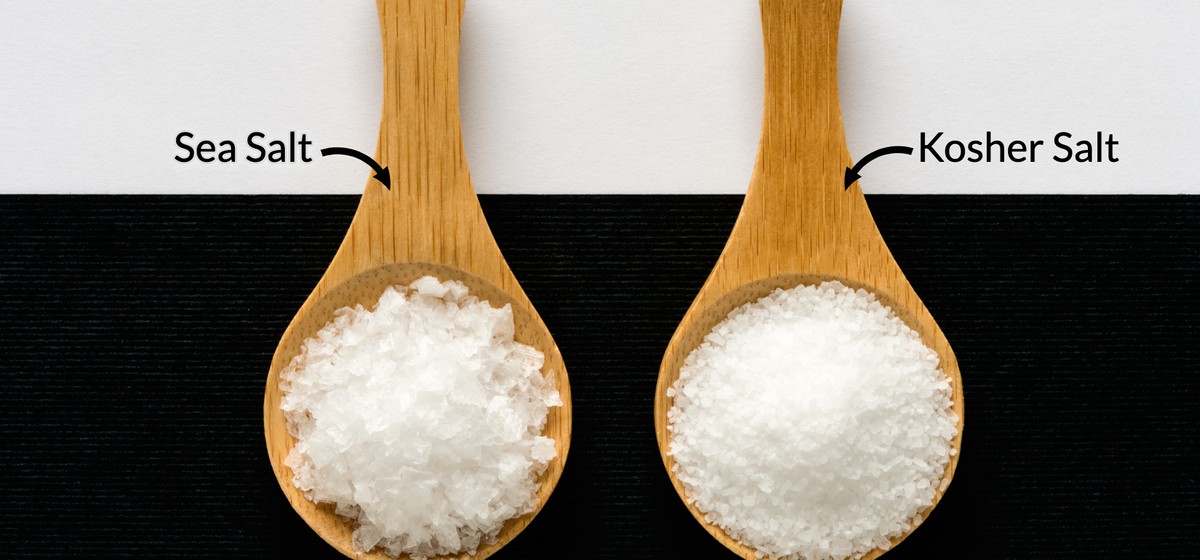10 Realistic Ideas to Help You Become a Better Cook




If you have ever tried to find one list of universal cooking hacks, tips, rules, or any general information on how to improve your cooking or take it to the next level, you know it’s nearly impossible.
You end up in the ocean of clickbaity listicles usually containing some recently viral kitchen hack, some quotes from a famous Food Network personality, and many pictures. While all of those are very entertaining and are certainly a great way to stay pleasantly idle, they never provide any solid, honest answer to the question “What is important to know to become a better cook?”.
The ten ideas you are about to find are no simple kitchen hacks. These ideas won’t magically make you into a Gordon Ramsay, but they will give you a clear view of what to focus on when making your next meal and what culinary knowledge you need to learn or get better at.
And you know what? Even Gordon Ramsay himself would probably agree with everything on this list. So let’s begin:
Have you heard this before? This famous statement has been cited in print since the 1960s. Some food professionals disagree and say that cooking and baking are a bit of both. But if you don’t have culinary school training and years of restaurant kitchen experience, you should generally follow this rule.
Whenever you follow a new recipe, you should taste and adjust the flavors as you cook. Most recipes are general guidelines, and you can either add more spice if you like it hot or decide not to use one of the ingredients if you particularly dislike it or perhaps are allergic to it. Cooking is forgiving and somewhat subjective.
You may love chocolate habanero peppers and enjoy the Scoville heat of 500,000 and up, but most people won’t appreciate such an extreme kick to their taste buds and won’t eat those peppers unless there’s a money prize or they’ve lost some cruel bet.
So just taste as you cook, taste your dish through its various stages, and adjust when needed. With practice, patience, and a bit of general knowledge of different spices and flavor mixing, you will be able to salvage any dish before it reaches the dinner table.
It’s an entirely different story when it comes to baking. All baking recipes give you exact amounts of ingredients, detailed steps, and techniques, and if you follow it to a T, you will end up with the end product you hoped for.

See! Just like a science experiment. It’s accurate and can be reproduced consistently. Try adjusting a souffle recipe to fit your taste palette better, and whatever you end up with sure won’t be classified as a souffle anymore. It will be something, but not a souffle.
Now, if you are a real connoisseur of home baking, and have mastered many techniques, do take your chances and experiment. And even then, there will be instances when your baking experiments would fail miserably.
TLDR:
Always taste your dish when cooking. Adjust flavors as you go.
Follow recipes for baked goods precisely. Best use a kitchen scale too.
If the term ‘umami’ when describing flavor is unfamiliar to you, stop reading and google it immediately.
‘Umami’ is the fifth taste. There’s sweet, sour, salty, bitter, and there’s umami. The term itself was coined by a Japanese scientist and has only been officially recognized as the fifth (and the most magical) flavor in the 1980s. Roughly translated as “pleasantly savory,” it is hard to explain what umami tastes like.
Can you use words to describe what “salty” tastes like? Exactly! Salty tastes, well, salty… and umami tastes fantastic. It makes your savory dishes moreish and adds ephemeral complexity to all the flavors. Amazing.
Now the tricky part is there’s no specialty store where you can go and buy some umami for your Sunday roast. So where do I get this umami stuff, you wonder.
You achieve the magical fifth flavor by using the so-called ‘umami agents’ in your cooking. Just to give you a few examples: fish and oyster sauce, cured meats, anchovies, kimchi, sun-dried tomatoes. Find out more about umami flavor from our 10 Umami Rich Ingredients to Cook With article.
Have you seen recipes explicitly asking you to use Kosher salt? Have you ever wondered why?
Actually, Kosher salt has nothing to do with dietary guidelines. It was initially meant for koshering meat (as in removing all the blood from it) and is a coarse-grained type of salt that doesn’t contain iodine.
Now, a lot of recipes urge you to use Kosher salt because salt not containing iodine just tastes better. Its large light flakes don’t dissolve immediately and help evenly salt your dishes throughout the cooking process.

As a general rule, use Kosher salt for cooking and baking and sea salt to add a finishing touch to your dishes. Forget about table salt, which is full of iodine and other additives.
You know, when you taste the food and say to yourself, “Something is missing…” 9 times out of 10, the missing element you’re referring to is acid.
Acidity (or pH level) is crucial in cooking. There’s a whole course dedicated to acid and base in food science one must take in culinary school. But there’s no time to go that deep. Remember that acid amplifies the flavors in a dish, adds depth, and helps bring everything into balance.
There’s a foolproof way to make sure your pork chops, chicken breast, or turkey doesn’t end up dry, chewy, or tasteless. Just brine the lean cuts of meat before you cook it.
Brining tenderizes the meat and makes it keep all the juices in when you cook it. Food science magic!
If you’re worried that brining is some kind of a complicated process that requires hard-to-find ingredients, don’t be. You only need water, salt, and a little bit of time.

If you’re cooking a whole bird, make sure to let it sit in the salty water solution for 12 hours or so. You don't need that long if it’s just pork chops or chicken breast. The general brining rule is 1 hour per pound.
Dissolve one cup of Kosher salt in one gallon of water for a standard brine solution.
There are plenty of fancier brine options you can look up, but this basic one works like magic every single time.
Whatever dish you decide to make, you will always find the necessary heat level mentioned in the cooking instructions. There are four heat levels you should know about:
Low heat: this is the one for simmering.
Medium heat: this is the one for rapid simmering or gentle cooking. Like when you want to let your vegetables soften.
Medium-High heat is probably the heat level you’ll do most of your cooking. This is
where you do most of the frying, browning, and sautéing. It still lets you cook pretty
quickly but not burn it. You use it for cooking your foods all the way through.
High heat: you either start or finish your cooking process on high heat. You don’t use it for cooking your food all the way through. High heat is for searing meat, sautéing veggies, and thickening sauces.
Chances are, the recipe will make you change the heat level once or twice, and you should. Don’t use only one level of heat from start to end.
And we are yet again facing a dilemma and a great deal of contradicting web pages.
But first things first. One rule to follow when choosing your pans is “don’t be cheap.” These are your main tools, and it only makes sense to invest in a couple of high-quality ones. And you only need a couple, really.
It’s easy to get confused when you see headlines like “Toss your non-stick and use cast iron for everything” or “You can cook anything in your cast iron skillet.”
The truth is cast iron skillets are pretty amazing. And if you are lucky enough to inherit one from your mother or grandmother, it should be one of your main kitchen tools. But you still shouldn’t toss the non-stick pan in the trash. It’s not a competition; they are just different.
I’ll tell you more; it would be ideal to have a minimum of 4 pans in your kitchen - a non-stick pan, a stainless steel one, and a couple of cast iron skillets.
“Why do I need two cast iron skillets? And what can a stainless steel pan do that the other two can’t?” you might ask. There are a few things to consider:
Now imagine you’ve just made an excellent short rib roast in it for Friday dinner and plan to make the famous iron skillet cookie on Saturday… Probably not the best idea.
This is precisely why it’d be ideal to have two of them and keep one for sweet and the other for the savory.
Stainless Steel Pan: ensure a controlled medium-high and high heat cooking. Use it for more delicate foods like fish, seafood, and vegetables when you still want the crunch and a nice sear but don’t want it to stick or fall apart.
Non-stick Pan: low and medium heat. Perfect for pancakes, delicate crepes, fluffy omelets, or soft scrambled eggs.
Don’t ruin your cast iron with slow-cooking tomato sauces or by deglazing with wine or vinegar. Acid causes the seasoning of your pan to break down over time. Wich eventually makes some of your dishes have a metallic taste. Not a health hazard, but it sure isn’t pleasant.
Never cook acidic foods in non-stick. It will ruin the non-stick coating over time, and in that case, it’s not about your food changing taste; it’s highly toxic and dangerous.
Bonus tip: Get a Dutch Oven too.
TLDR:
Don’t buy cheap. Consider heat, food texture, and acidity when cooking in a cast iron skillet, stainless steel, or non-stick pan. Yes, it does matter.
As fancy as it sounds, don’t let the word ‘deglaze’ scare you. Deglazing is a simple process of simply adding liquid to a hot pan you just used to sauté some onions and garlic, seared a piece of meat, or did some other type of cooking that left some delicious browned bits stuck to the bottom of your pan.
Find a Step by Step Guide to Deglazing a Pan here if you’re still unsure.
This one is probably the most difficult to master but very important to understand. Think about how dishes are portrayed on restaurant menus or recipe descriptions. It’s always something like “crunchy coating with tender and juicy…”, “flavorful, yet tender…”, “salty with notes of sweetness…”, “smoky with spicy…”, it’s always a contrasting combination.
Even some of your favorite flavors you don’t think about too often are a pair of opposites (sweet and sour chicken, or salted caramel anyone?).
This is not something you should try to learn; it is more about paying more attention to contrasting flavors and textures and making a mental note of the ones that work together best.
It’s sort of like the “live in the moment” concept but for food, makes sense? Just be conscious of what your taste buds are trying to tell you. And you’ll eventually ‘feel’ it.
Last but not least, stay curious and don’t be afraid to take risks (maybe not while baking, though). Try new recipes, eat in new restaurants, discover new cuisines.
My grandma, an excellent cook, always says, “If you don’t know what ‘delicious’ is supposed to taste like, how can you cook anything delicious?”. So true!
So eat more of everything, explore new flavors, and learn more about what good food is supposed to taste like. And don’t forget to scroll through an occasional viral food hacks article or two.